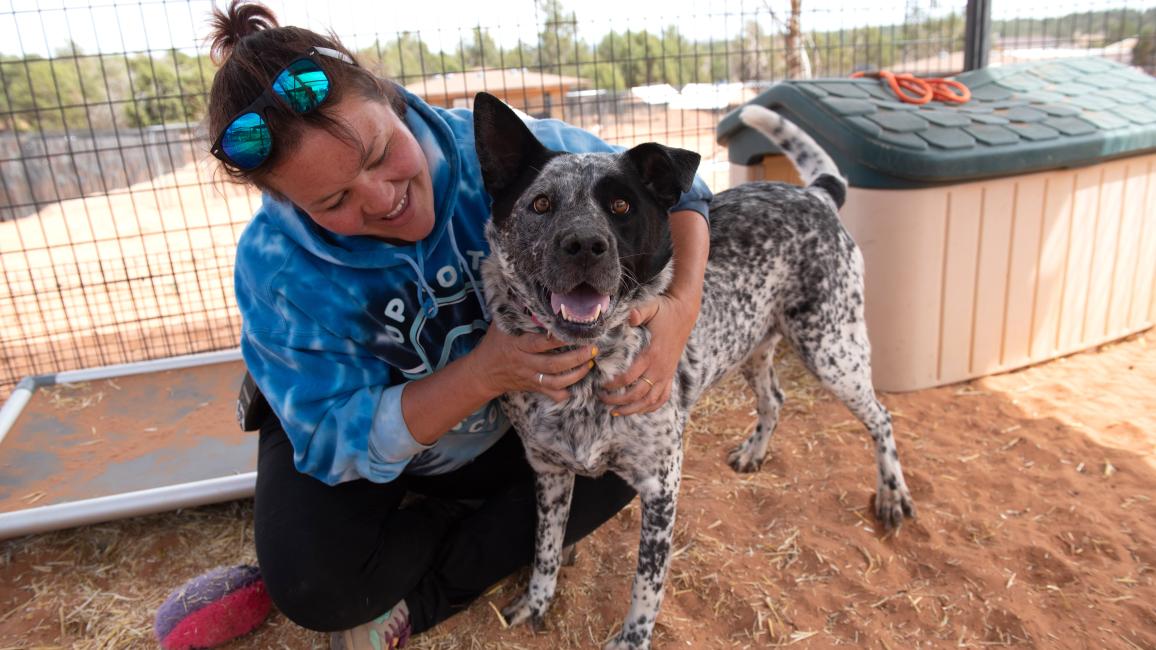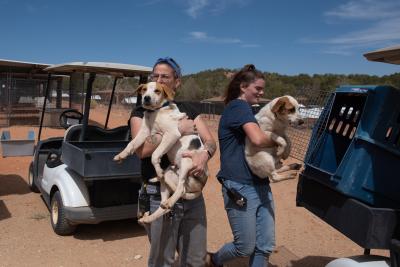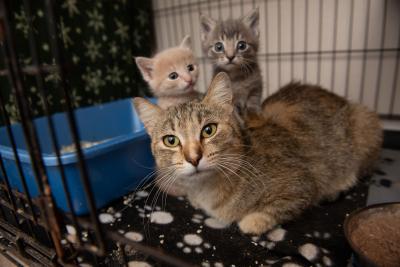Raining cats and dogs at the Sanctuary

The sand may be dry but it certainly looks like it has been raining cats and dogs at the Sanctuary — in a literal way. Over the course of just a few weeks, nearly 400 dogs, cats, kittens and puppies in urgent situations arrived at Best Friends.
“They came from some of our partners who are working really hard to get to no-kill but still have lifesaving gaps,” says Judah Battista, chief sanctuary officer. “Assisting our partners in these cases, whenever we can, is one way the Sanctuary supports the work toward helping every community reach no-kill by 2025.”
The doggie deluge started with 50 dogs from a small shelter that was full. And then the morning that the dogs arrived, there was an emergency call from a Texas organization that was closing and needed to send 40 more dogs to Best Friends.
[Dog rescue transport is trip of a lifetime for 60 Texas pups]
As the second caravan of canines arrived, we received a message about a shelter in New Mexico that needed to make space for pets displaced by wildfires. Again, these were in addition to the pets that had just recently arrived at the Sanctuary. “All in all, we took in 140 dogs in a 10-day period,” Judah says.
Then came the cats. Three more partner organizations were flooded with felines with many more on the way and no space to house them. “It was supposed to be about 150 cats,” Judah says, “and a hundred more snuck in.”
The Sanctuary staff got to work immediately, putting up temporary enclosures and finding suitable spaces for the new arrivals. Any office that didn’t already have a “desk dog” got a “computer kitty.” It became a canyon-wide collaboration to make sure all the pets were safe and comfortable. Staff members opened their homes to foster mama cats with kittens, orphaned litters, adult dogs and packs of puppies. (Whew!)

Challenging summer for homeless pets
It's always exciting when new furry friends arrive at the Sanctuary, and while there were quite a lot of them all at once in this case, the enthusiasm to help remained the same. “It was amazing. Everybody just rallied behind it,” Judah says. “Summer is always hard, but this summer was especially hard. We’re doing the best we can to help as many animals as possible, so shelters striving to reach no-kill don’t have to make those tough decisions.”
[Summer Pet Safety Tips: Keeping Dogs, Cats and Other Pets Safe in Hot Weather]
Some of the newly arrived pets will stay for a time, while many others have already moved on to their next step toward homes. While the Sanctuary remains a safe place for animals needing more time and special care before they’re ready to go into homes, the Sanctuary’s role has evolved over the years.
More than ever before, we’re matching up incoming pets with our partner shelters and rescue organizations who have capacity to help them. These are partners with enough lifesaving experience that they’re able to help others. They are also key in the overall goal of reaching no-kill by 2025.

Bright futures ahead
“The only way the entire country will get to no-kill is if shelters and rescue organizations that are doing well expand (their thinking toward) helping their colleagues,” says Judah.
The animals benefit when we help each other. It’s as simple as that. Mama cat Future and her kittens lost their home and landed in a shelter that was already full, and that could have meant the end of their lives. Sweet and healthy, they were just in the wrong place at the wrong time. Now, just like mama kitty’s name, they and so many others have bright futures ahead.

Driven to help pets?
Whether you volunteer, foster or adopt, there’s always a way to help homeless pets in your community, including transporting animals.
Read more
Connecting Florida cats with families across the eastern U.S.